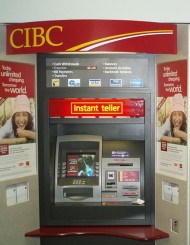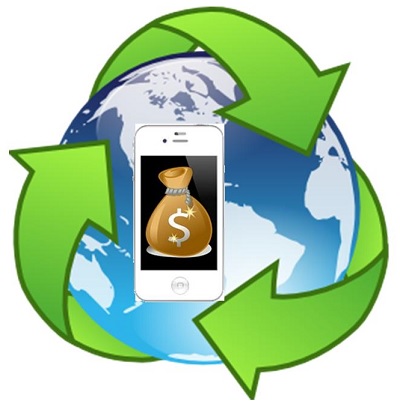CIBC has announced its expansion of the smartphone transactions for credit card holders.
Major Canadian bank, CIBC, has now partnered with a second large wireless carrier in the country in order to be able to broaden the availability of its mobile payments services to its customers who have NFC technology enabled smartphones.
CIBC and Telus have now announced a new partnership and mobile payments app.
This partnership has brought about a new app that will allow certain models of smartphones with NFC technology that run on the Telus network to be able to be used for making credit card purchases for items costing up to $50. These small purchase include anything from groceries to gas.
CIBC already has an established partnership with Rogers for NFC technology based smartphone payments.
Rogers is one of the largest wireless providers in Canada. That company started its mobile payments partnership in 2012. Customers of both of those companies can use their mobile devices at Canadian “tap and pay” terminals. According to the CIBC senior vice president of payments strategy and innovation, Todd Roberts, “In the next two years, by and large, you will have every bank and every major telco providing the service to clients.”
Roberts explained that he feels that this technology will become just as common as telephone banking and ATMs. He said that when this happens, “we will treat this as an everyday part of our lives.”
In order to encourage mobile payments to spread more broadly, smartphones would have to be enabled with near field communication tech. This makes it possible for the terminals to read the necessary verification data from the mobile devices so that small credit card purchases can be made. At the moment, to use this service, the credit card must have been issued by CIBC and they must have their wireless service through Rogers or Telus. In the future, the bank expects that a partnership may also be possible with Bell, one of the largest wireless providers in the country.
The more wireless carriers there are in partnership with CIBC for NFC technology based mobile payments, the better the chances that a credit card customer will be able to actually use these services.
New report highlights the growth of mobile commerce across 13 countries
MEF, a global trade association focused on the mobile space, has release the first report in its Global Consumer Insights Series on Mobile Money. The report highlights the growing popularity of mobile payments across 13 countries. Mobile commerce has been making strong growth in many of the world’s most prominent markets. Much of this growth is being driven by the growing number of people that have smartphones and tablets and how much they are beginning to use these devices in their daily lives.
Report shows 15% of device users have made a mobile purchase in 2013
According to the report, some 15% of device users throughout 2013 made some form of mobile payment from their smartphones or tablets. The majority of these people made a purchase using some kind of mobile wallet application. These applications primarily leverage NFC technology, which allows digital information to be transmitted over short distances. Mobile wallets that do not make use of NFC technology are becoming more popular, however, as NFC-enabled mobile devices are still somewhat rare.
Mobile money users are becoming more important to businesses around the world
The report shows that mobile money users tend to spend more on individual purchases than others. The report notes that mobile money users are 10% less likely to make low-value payments and 14% more likely to make mid-value payments. These particular consumers are becoming an important demographic for businesses that wish to engage the mobile audience, especially because these consumers are more likely to participate in mobile-centric initiatives, particularly those that leverage some kind of engagement technology, such as QR codes.
Mobile-only culture is beginning to emerge in developing countries
MEF’s report suggests that a “mobile-only” culture is beginning to emerge in developing countries. This involves people becoming more dependent on their mobile devices and making use of services that are only available through mobile platforms. Mobile banking, for instance, is becoming quite popular and a growing number of consumers are beginning to manage their finances solely through these mobile platforms. Mobile banking is expected to become much more popular than it already is as more financial institutions begin targeting mobile consumers.



